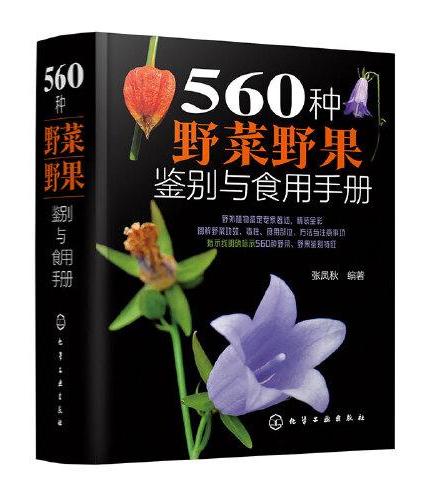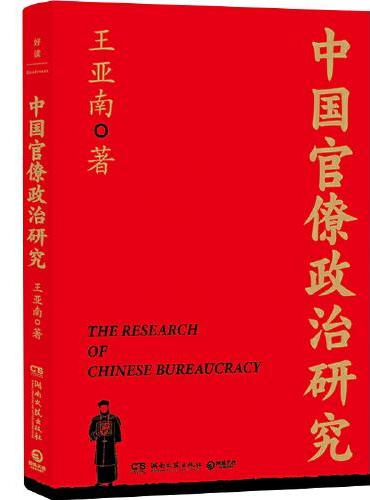新書推薦:

《
560种野菜野果鉴别与食用手册
》
售價:HK$
67.1

《
中国官僚政治研究(一部洞悉中国政治制度演变的经典之作)
》
售價:HK$
62.7

《
锂电储能产品设计及案例详解
》
售價:HK$
110.9

《
首辅养成手册(全三册)(张晚意、任敏主演古装剧《锦绣安宁》原著小说)
》
售價:HK$
121.0

《
清洁
》
售價:HK$
65.0

《
组队:超级个体时代的协作方式
》
售價:HK$
77.3

《
第十三位陪审员
》
售價:HK$
53.8

《
微观经济学(第三版)【2024诺贝尔经济学奖获奖者作品】
》
售價:HK$
155.7
|
| 編輯推薦: |
|
本书覆盖了无线移动通信所涉及的各个主题,还提供了开拓思维的实验项目,是无线移动通信本科课程的理想双语教材。
|
| 內容簡介: |
|
本书系统、全面地介绍了无线移动通信的基本理论,分析了无线移动通信所涉及的各个主题,包括无线移动信号的传输、蜂窝的基本概念、多路无线接入、多址技术、调制技术、信道分配技术、通信系统的设计、网络协议、现有的蜂窝系统、IEEE 802系列技术、Ad Hoc网络与传感器网络、无线网络的安全性与隐私问题、卫星通信系统等。为了加强对书中概念的理解,各章还给出了开拓思维的实验。
|
| 關於作者: |
|
Dharma Prakash Agrawal 博士,美国俄亥俄州教育局计算机科学与工程专业杰出教授,美国辛辛那提大学电气工程与计算机科学系分布式移动计算中心的创办主任。他获得了IEEE计算机学会的众多证书和奖励,并被选为核心成员,他还是ACM、AAAS和WIF会士,美国国家发明家科学院的资深会员,2008年获得哈里谷德奖(IEEE CS Harry Goode Award)。Qing-An Zeng(曾庆安) 1997年于日本静岗大学获得电子工程学博士学位,毕业后进入日本电气株式会社(NEC),从事第三代移动通信系统的开发和研究,曾作为NEC的两名专家代表之一参加了第三代移动通信系统的数据层和网络层的标准制定工作,还作为NEC的专家代表参加了香港第三代移动通信系统的选定工作。1999年,他被美国辛辛那提大学聘为教授、博士生导师。他还是IEEE高级会员。
|
| 目錄:
|
|
目 录CHAPTER 1 Introduction 11.1 History of Cellular Systems 11.2 Characteristics of Cellular Systems 121.3 Fundamentals of Cellular Systems 151.4 Cellular System Infrastructure 211.5 Network Protocols 241.6 IEEE 802.11 Technologies 241.7 Ad Hoc Networks 251.8 Sensor Networks 261.9 Wireless MANs, LANs, BANs, and PANs 271.10 Security and Privacy in Wireless Networks 281.11 Satellite Systems 281.12 Recent Advances 291.13 Outline of the Book 291.14 References 301.15 Problems 31Chapter 2 Mobile Radio Propagation 332.1 Introduction 332.2 Types of Radio Waves 332.3 Propagation Mechanisms 342.4 Free Space Propagation 352.5 Land Propagation 372.6 Path Loss 392.7 Slow Fading 412.8 Fast Fading 432.8.1 Statistical Characteristics of the Envelope 432.8.2 Characteristics of Instantaneous Amplitude 462.9 Doppler Effect 482.10 Delay Spread 502.11 Intersymbol Interference 512.12 Coherence Bandwidth 522.13 Cochannel Interference 522.14 Summary 532.15 References 532.16 Experiments 542.17 Open-Ended Projects 552.18 Problems 55Chapter 3 Cellular Concept 583.1 Introduction 583.2 Cell Area 583.3 Signal Strength and Cell Parameters 603.4 Capacity of a Cell 643.5 Frequency Reuse 663.6 How to Form a Cluster 673.7 Cochannel Interference 703.8 Cell Splitting 723.9 Cell Sectoring 723.10 Summary 753.11 References 753.12 Experiments 753.13 Open-Ended Projects 773.14 Problems 77Chapter 4 Multiple Radio Access 814.1 Introduction 814.2 Multiple Radio Access Protocols 824.3 Contention-Based Protocols 834.3.1 Pure ALOHA 844.3.2 Slotted ALOHA 854.3.3 CSMA 864.3.4 CSMACD 904.3.5 CSMACA 914.4 Comparison of CSMACD and CSMACA 954.5 Summary 954.6 References 954.7 Experiments 974.8 Open-Ended Projects 984.9 Problems 98Chapter 5 Multiple Division Techniques 1005.1 Introduction 1005.2 Concepts and Models for Multiple Divisions 1005.2.1 FDMA 1015.2.2 TDMA 1035.2.3 CDMA 1055.2.4 OFDM 1105.2.5 SDMA 1125.2.6 Comparison of Multiple Division Techniques 1135.3 Modulation Techniques 1145.3.1 Amplitude Modulation AM 1145.3.2 Frequency Modulation FM 1145.3.3 FSK 1165.3.4 Phase Shift Keying PSK 1165.3.5 Quadrature Phase Shift Keying QPSK 1175.3.6 π4QPSK 1175.3.7 Quadrature Amplitude Modulation QAM 1195.3.8 16QAM 1195.4 Summary 1205.5 References 1215.6 Experiments 1215.7 Open-Ended Projects 1225.8 Problems 122Chapter 6 Channel Allocation 1256.1 Introduction 1256.2 Static Allocation versus Dynamic Allocation 1266.3 Fixed Channel Allocation FCA 1266.3.1 Simple Borrowing Schemes 1276.3.2 Complex Borrowing Schemes 1276.4 Dynamic Channel Allocation DCA 1306.4.1 Centralized Dynamic Channel Allocation Schemes 1306.4.2 Distributed Dynamic Channel Allocation Schemes 1316.5 Hybrid Channel Allocation HCA 1326.5.1 Hybrid Channel Allocation HCA Schemes 1326.5.2 Flexible Channel Allocation Schemes 1336.6 Allocation in Specialized System Structure 1336.6.1 Channel Allocation in One-Dimensional Systems 1336.6.2 Reuse Partitioning-Based Channel Allocation 1346.6.3 Overlapped Cells–Based Channel Allocation 1356.7 System Modeling 1376.7.1 Basic Modeling 1376.7.2 Modeling for Channel Reservation 1396.8 Summary 1406.9 References 1416.10 Experiments 1416.11 Open-Ended Projects 1436.12 Problems 143Chapter 7 Mobile Communication Systems 1477.1 Introduction 1477.2 Cellular System Infrastructure 1477.3 Registration 1517.4 Handoff Parameters and Underlying Support 1537.4.1 Parameters Influencing Handoff 1537.4.2 Handoff Underlying Support 1547.5 Roaming Support 1567.5.1 Home Agents, Foreign Agents, and Mobile IP 1577.5.2 Rerouting in Backbone Routers 1597.6 Multicasting 1617.7 Ultra-Wideband Technology 1647.7.1 UWB System Characteristics 1647.7.2 UWB Signal Propagation 1657.7.3 Current Status and Applications of UWB Technology 1657.7.4 Difference between UWB and Spread Spectrum Techniques 1667.7.5 UWB Technology Advantages 1667.7.6 UWB Technology Drawbacks 1677.7.7 Challenges for UWB Technology 1677.7.8 Future Directions 1687.8 Femto Cell Network 1
|
|









